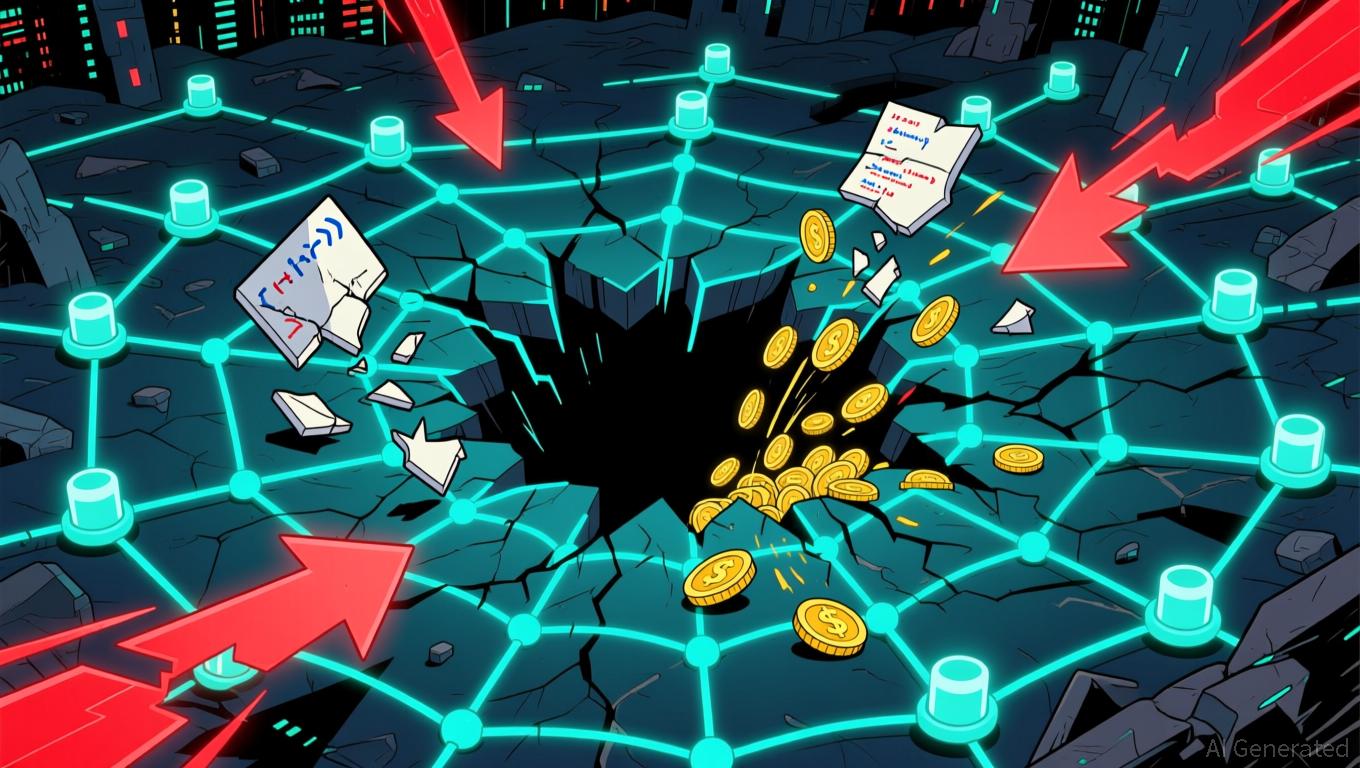Cardano News Today: Vulnerabilities in DeFi Smart Contracts Reveal Underlying Systemic Risks
- Balancer's third major exploit in 2025 drained $116M via a smart contract vulnerability, exposing DeFi's fragility. - Elixir's deUSD stablecoin collapsed after Stream Finance's $93M loss, echoing past DeFi crises. - Cardano's $271M TVL lags peers due to governance issues, despite high staking activity, as founder Charles Hoskinson pushes Bitcoin integration. - Industry calls for stronger audits and governance as DeFi's TVL rebounds but remains vulnerable to systemic risks. - BAL and ADA tokens trade belo
The decentralized finance (DeFi) industry is under increasing examination following a string of major hacks that have revealed weaknesses in its systems, with the most recent incident resulting in the theft of more than $116 million from the Ethereum-based platform
On November 3, 2025, attackers took advantage of a flawed access control in Balancer’s boosted pools, which utilize Ether derivatives. By exploiting the `manageUserBalance` function, the perpetrators siphoned off assets such as 6,587 WETH ($24.46 million), 6,851 osETH ($26.86 million), and 4,259 wstETH ($19.27 million) from the

The Balancer breach highlights the broader vulnerability within DeFi’s interconnected platforms. Another crisis unfolded when Elixir, a synthetic dollar protocol, decided to discontinue its deUSD stablecoin after its main borrower, Stream Finance, went under. Stream’s external asset manager disclosed a $93 million deficit, causing its
These developments are reminiscent of the 2022 failures of Terra’s UST and Iron Finance, where excessive leverage and unclear collateralization worsened the fallout. Elixir stated that deUSD obligations are still fully collateralized but emphasized the importance of unwinding lending arrangements with Stream.
While security breaches dominate the news, governance issues add further complexity to DeFi’s progress.
Hoskinson has suggested that bringing in
The recent wave of attacks has led to stronger demands for enhanced security reviews and better governance structures. Balancer’s team has advised users to revoke protocol permissions and keep an eye on wallet activity, while Elixir has prioritized protecting creditors over immediate market actions. At the same time, projects are focusing on thorough audits and testnet launches to foster confidence, as reported in a
As DeFi’s total value locked recovers from its 2024 low, the industry’s ability to withstand future shocks will hinge on addressing both technical flaws and governance shortcomings. For now, caution prevails among investors, with both Balancer’s BAL token and
Disclaimer: The content of this article solely reflects the author's opinion and does not represent the platform in any capacity. This article is not intended to serve as a reference for making investment decisions.
You may also like
Chris Sacca’s venture capital firm is launching a new fund focused on nuclear fusion for the second time
Tesla plans to start manufacturing Cybercab in April, according to Musk
Tesla postpones unveiling of the production Roadster 2 until April Fools’ Day
DeFi’s Delicate Network: Elixir Recovers Following $93M Crash
- Elixir opens USDC redemption for deUSD after Stream Finance's $93M loss triggers 77% depeg. - 80% of deUSD holders redeemed tokens; remaining processed via claims portal as minting halts to prevent liquidation risks. - Elixir partners with Euler, Morpho, and Compound to liquidate Stream loans, pending legal creditor prioritization. - DeFi contagion prompts Compound to pause stablecoin markets, highlighting systemic risks in cross-protocol lending. - Elixir asserts full liability backing but underscores f
